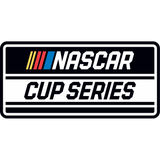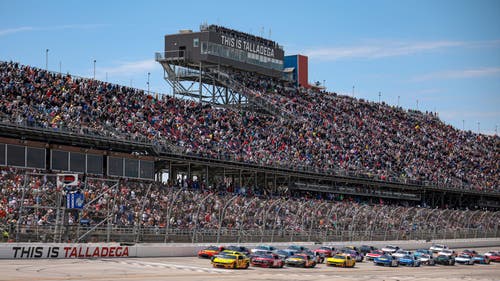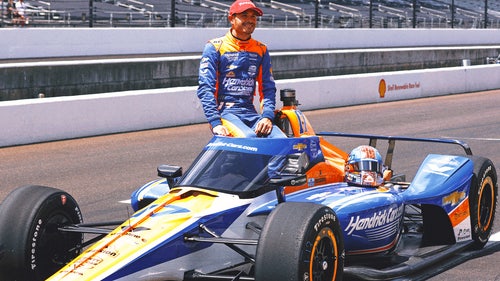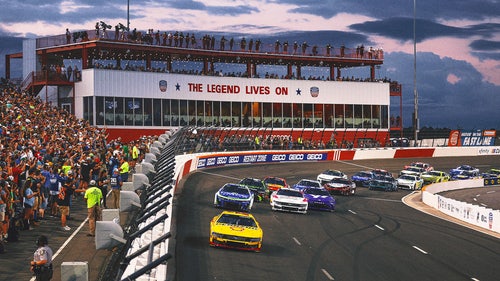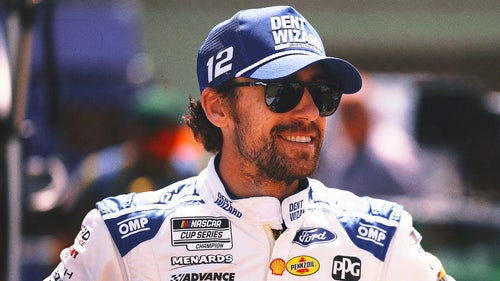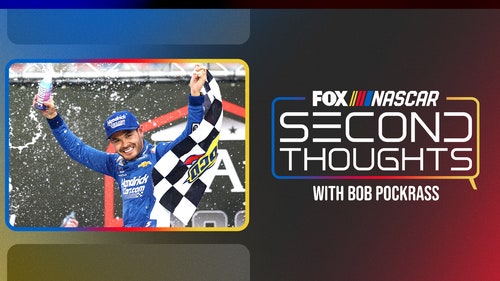
Dale Jr. offers painful reminder
The death of Dale Earnhardt Sr. led to sweeping changes that made NASCAR a safer sport through mandatory neck restraints, impact-absorbing SAFER barriers at tracks and a redesigned stock car.
More than 11 years after the elder Earnhardt was killed at Daytona International Speedway, his son may help make the sport even safer by the mere fact he decided to take himself out of his car.
Dale Earnhardt Jr. announced Thursday that he would forgo the next two races due to concussion-like symptoms, effectively ending the hunt for his first Sprint Cup title.
“I think you saw a driver who is racing for a championship, who is our most popular driver, gets up here, asks (to) go see a doctor and gets out of a car,” said Steve O'Donnell, NASCAR’s senior vice president of racing operations. “That takes a lot of guts. I think it also shows where our sport has come and they know that safety is first and foremost.”
NASCAR does not have the same concussion standards as the National Football League or National Hockey League, sports that have had to confront the topic of head trauma due to high-profile player injuries and new research into the long-term implications of such injuries. Part of that is because concussions in NASCAR — despite the high speeds the cars attain — have become rarer over the years as the safety equipment has improved.
But the implications for letting a concussed driver back on the track are more perilous than in stick-and-ball sports. The difference: a 3,400-pound chunk of metal that can reach speeds of 200 mph.
“Not having a driver back at full performance would be awfully dangerous,” said Dr. Robert Harbaugh, the director of Penn State’s Institute of the Neurosciences and an advisor to the NFL. “These drivers have to process an awful lot of information. I can’t imagine them doing that successfully with post-concussion syndrome.”
Harbaugh also pointed to research done by Penn State professor Semyon Slobounov that showed reaction time and spatial memory (remembering how to maneuver around your environment) are two of the major neurological functions affected by a concussion.
“In a sport like NASCAR, that could have really bad consequences,” Harbaugh said.
Earnhardt would have remained in the No. 88 Chevrolet for this weekend’s race in Charlotte had he not come forward of his own accord. (Regan Smith will fill in for Earnhardt in Charlotte and during next week’s race in Kansas.) Earnhardt told reporters that symptoms from an Aug. 28 tire-test crash in Kansas had re-emerged days after a less-forceful crash at Talladega this past Sunday — something that often happens when the brain has not fully recovered from the initial trauma.
“When something happens to your body, I want to live a healthy life so I'm going to make sure that I'm doing the right thing, and that's all I felt like I was doing here,” said Earnhardt Jr., who told reporters concussion-like symptoms resurfaced following the crash at Talladega.
The series does mandate an emergency room physician examine drivers after an accident at the infield care center — if their car is unable to resume the race — and drivers are transported to a hospital if a head injury is suspected. After a driver is discharged, a board-certified neurologist or neurosurgeon with at least five years of experience must clear a driver’s return to racing.
Those guidelines, however, don't come into play when a driver can maneuver his car into the garage or stays in a race. Drivers are only required to head to the infield care center if a wrecker is forced to tow the mangled vehicle.
In the ultra-competitive racing world where even a slot in NASCAR’s Camping World Truck Series is coveted, it’s not such an easy call for drivers to come forward if a concussion isn’t initially diagnosed.
“I was in few wrecks on a Saturday where it probably wasn’t a good idea to race the next day, going back to my open-wheel days,” NASCAR driver Kenny Schrader told FOXSports.com. “We did a lot of stupid things like that back then. That doesn’t mean it was right.”
Schrader said there has been a change in culture in the sport since his longtime friend Dale Sr. passed, although driver safety remains largely up to the guy behind the wheel.
“It’s still up to the drivers and teams to police themselves,” Schrader said.
Other sports have taken away much of the discretion from its athletes by instituting baseline testing before a season starts, cognitive tests that are compared by athletic trainers and doctors to where an athlete is after a suspected concussion. (NASCAR does not require preseason examinations.) The NFL, NHL and other sports also have strict return-to-play guidelines, in which athletes must meet certain strict benchmarks before they are allowed back into a game.
NASCAR has the authority to keep a driver out of a race due to a concussion. O'Donnell cited two examples: Eric McClure (missed six weeks this season before he was cleared) and Rick Crawford (missed a Truck series race in 2005). The series typically relies on outside doctors, like Earnhardt’s neurosurgeon Dr. Jerry Petty, to assess a driver when a concussion is suspected.
“NASCAR takes the health and well-being of its competitors seriously and would not hesitate to park a driver suspected of having a concussion,” NASCAR spokesman David Higdon said in an email to FOXSports.com.
Paramedics cleared Earnhardt after the crash he initially sustained in Kansas and he was not referred to a neurosurgeon for further tests. (Each track has different standards for medical personnel such non-race events.) He wasn’t evaluated after a less forceful crash at Talladega since he went to the garage for repairs.
O'Donnell said, like after Earnhardt’s father died during the final lap of the 2001 Daytona 500, NASCAR will re-evaluate its policies.
“We'll do that with safety each and every incident,” O'Donnell said.
